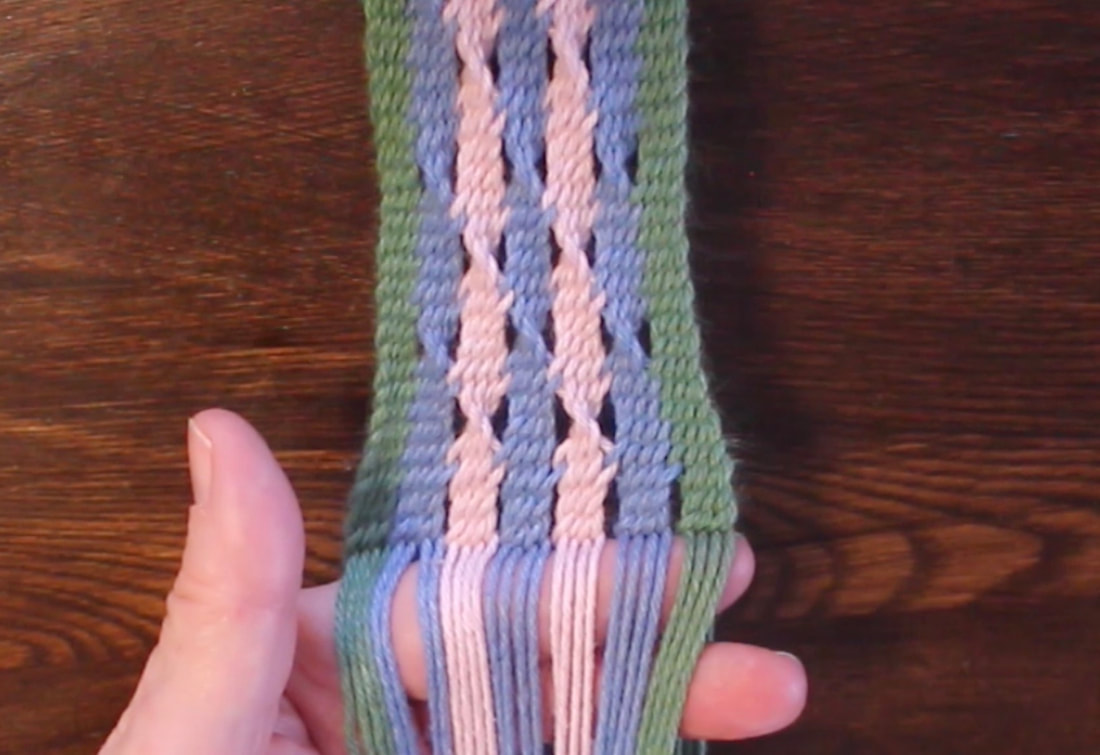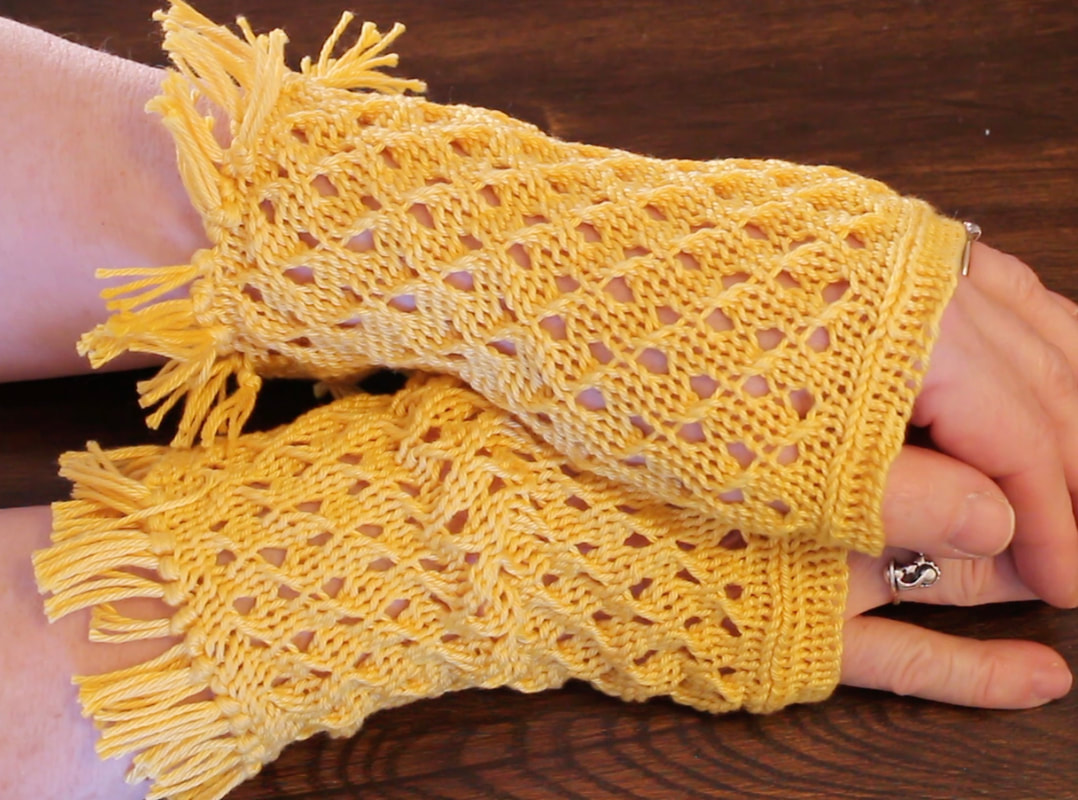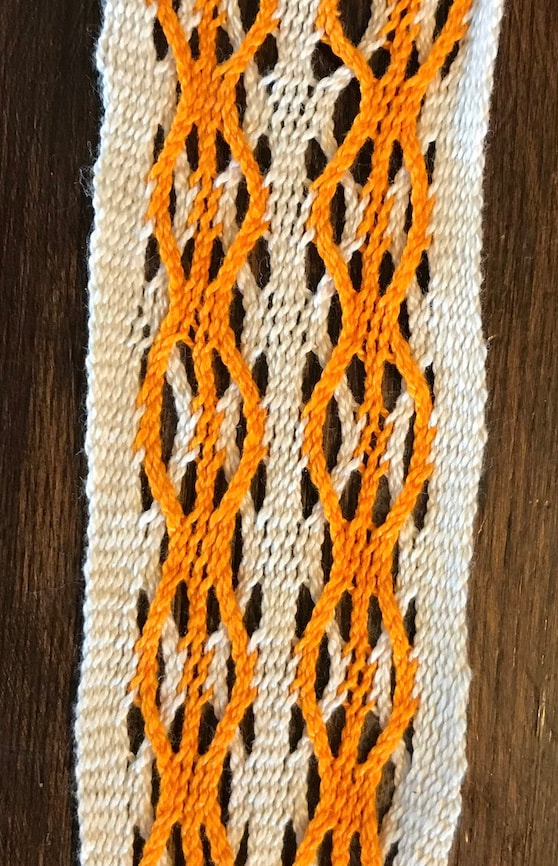June: Transpositions-Twists
Transpositons: According to Peter Collingwood, physically moving groups of warp threads across the surface of your cloth is called transposition. It can be used for great decorative effect.
This month's structure also introduces you to the use of the edge stitch in the middle of the row. This is the way you make holes in the fabric ... or long slits ... to create a number of tabs across the width of your piece. For the purposes of clarity in the instructional video, I have set up different colors in the warp. The bands of color help you to identify the place for the holes.
The video shows you how to make slits in your fabric. It goes on to show you how to twist the resulting tabs for a decorative effect. The twist is a structure I use to introduce the technique. Variations beyond twists are endless ... but I recommend you start with this one.
This month's structure also introduces you to the use of the edge stitch in the middle of the row. This is the way you make holes in the fabric ... or long slits ... to create a number of tabs across the width of your piece. For the purposes of clarity in the instructional video, I have set up different colors in the warp. The bands of color help you to identify the place for the holes.
The video shows you how to make slits in your fabric. It goes on to show you how to twist the resulting tabs for a decorative effect. The twist is a structure I use to introduce the technique. Variations beyond twists are endless ... but I recommend you start with this one.
|
This is a PDF document offering instructions as well as a chart to help you create your own twist-transposition sample.
| ||||||
|
|
Another Edge Solution ... the chain stitch
While we're at it, let me introduce another method to reduce those loops along the edge ... chain across. I've seen this near the brim of several Egyptian bonnets, and find it another very effective way to reduce the size of the loops at the edge. |



